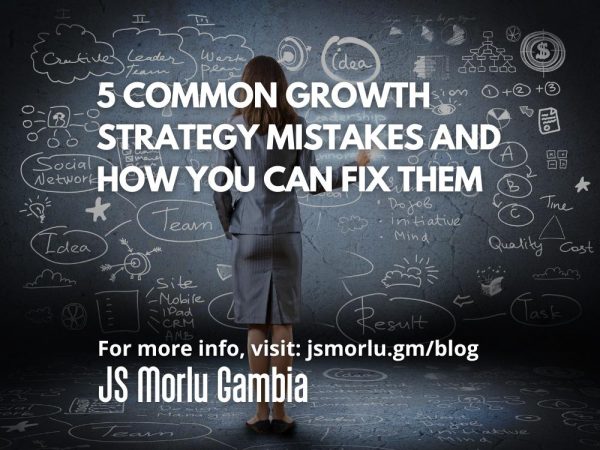Are you making growth strategy mistakes? If so, you’re not alone. So many companies struggle to wade through the usually outdated growth tactics and “hacks” on the internet to find those growth strategy gems that are going to help them scale.
If you’re missing the mark with your growth strategy, here are five common growth strategy mistakes, so you can avoid them!
1. Following the trends — all of them
Analyzing the growth strategies of other businesses is a wonderful way to get ideas for growing your own business. But just taking someone else’s strategy and applying it to your business? Not so much.
Your business is unique. Even if you’re in the same industry and have a similar product, your specific blend of company values, employee skills and personality aren’t like any other company out there. So, why try to copy their growth, marketing or messaging strategies?
Instead, take what you learn and break it down to figure out why it works. Then you’ll be in a much better position to decide if that strategy will work for your business, too.
2. Focusing on the wrong KPIs (or none at all)
You have to have a way to measure performance. KPIs, or Key Performance Indicators, are what you’ll use to do that.
But just having KPIs in place won’t cut it. You actually have to review them regularly and then act on what they’re telling you. The KPIs you use should be tied to your strategy, and like the trends we just talked about, not all KPIs that your competitors are using are going to be right for you. Choose KPIs that make sense for your strategy and your business goals.
3. Ignoring your customers
Growth doesn’t have to come from more features or product improvements. Customer research and CX mapping help you make impactful and strategic decisions. Understanding your customers leads to improvements in messaging and positioning that endear customers to your business.
4. Not creating a go-to-market team
Your company probably has several different teams that work on marketing, product and engineering, customer experience and more. You’re missing out on some serious insights if you’re not bringing those teams together to develop or refine your go-to-market strategy.
Sure, each team has a specific set of responsibilities, but that doesn’t mean you can’t bring them together. In fact, bringing these seemingly disparate teams together ensures that everyone is on the same page, working toward the same goal. The marketing team will be able to gain an understanding of the customer experience from the CX team and learn about what it takes for the product and engineering teams to launch those “simple” product updates.
The result? A team that has a deeper knowledge of how the entire company works, a better understanding of how they fit into business operations and a stronger possibility that your company will produce a scalable and sustainable plan for growth.
5. Constantly trying to reinvent the wheel
Not every growth strategy has to be shiny and new. One of the simplest things you can do is make a list of what worked and what didn’t. Then, do more of what worked and (surprise!) less, if any, of what didn’t.
Seems incredibly simplistic, but it works. You don’t need to brainstorm 100% brand-new ideas every time you’re doing a growth push. If you feel the need to do something different, try testing and optimizing things instead of starting from scratch.
And, seriously, if something isn’t working even after you’ve tested and optimized? Drop it. There are too many things you could be doing to drive growth that aren’t trying to make something work when it’s just not going to.
Whether you’re just starting a business or scaling an existing business, having a growth strategy in place is key to your business’s success. But that doesn’t mean you have to establish a path and continue on it no matter what.
If you find yourself running into one or more of the growth strategy mistakes I’ve mentioned here, take a minute to regroup. Take a look at what’s happening, and make some changes to your strategy before moving forward.
Original Source: Entrepreneur Media
